Posts Tagged ‘Fort St Angelo’
-
NEVER FORGOTTEN
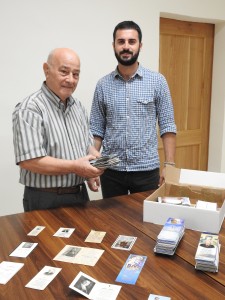 Recently, Max Farrugia has donated a collection of 10,500 memorial cards to the National Archives of Malta. I was curious to learn why someone would wish to have such a collection and what was its value to the national archives.
Recently, Max Farrugia has donated a collection of 10,500 memorial cards to the National Archives of Malta. I was curious to learn why someone would wish to have such a collection and what was its value to the national archives.“Initially, I started this collection in order to pray for the souls of the dead,” revealed Max. “I would separate the memorial cards into sets according to the village or town they came from. Then, each week, my family and I would choose a set, spread the memorial cards on a table and pray for their souls.”
“We were aware that among those individuals, there were elders who had no one to pray for them and so we did. We also believe that prayers can be passed on to other souls if the person we are praying for is already in heaven. Flowers wither, tears dry out but a prayer is always beneficial.”
Max succeeded to gather such a huge collection, mostly by word of mouth, and also a touch of luck, here and there.
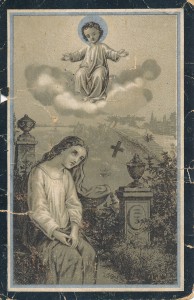 “I am 73 now and I have been collecting memorial cards for many years. When people learn that you have such an interest, they would generally help you out. I still receive packs of memorial cards in my letter box. Facebook is another great tool for such things. Whenever I post a request for memorial cards, someone will always respond,” he said as he smiled.
“I am 73 now and I have been collecting memorial cards for many years. When people learn that you have such an interest, they would generally help you out. I still receive packs of memorial cards in my letter box. Facebook is another great tool for such things. Whenever I post a request for memorial cards, someone will always respond,” he said as he smiled.Then there are moments of serendipity.
“One day, I was attending mass at the chapel of Fort St Angelo and I noticed a memorial card in the sacristan’s hand. I approached him and asked him whether I could have it since I was a collector. He gave it to me eagerly and told me to return within an hour so that he could bring me more. There were 400 memorial cards waiting for me when I returned!”
Some of the memorial cards in this collection go back more than 100 years. One of the oldest ones was discovered accidentally.
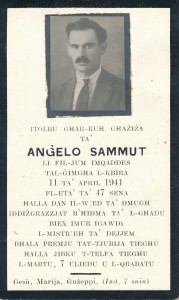 “I was at the DOI office to get some documents and while I waited, I started to talk with one of the officials. Soon I learnt that he lived in Birżebbuġa and when he continued to elaborate, I realised that he had purchased my great grandfather’s house. When I told him that, he informed me that he had found two old memorial cards in a piece of old furniture in that house. We met later on and he gave them to me. The memorial cards were of my great grandfather dating to 1897 and his brother.”
“I was at the DOI office to get some documents and while I waited, I started to talk with one of the officials. Soon I learnt that he lived in Birżebbuġa and when he continued to elaborate, I realised that he had purchased my great grandfather’s house. When I told him that, he informed me that he had found two old memorial cards in a piece of old furniture in that house. We met later on and he gave them to me. The memorial cards were of my great grandfather dating to 1897 and his brother.”As he opened some of the boxes brimming with memorial cards, Max selected a number of them to explain their research value to me.
“These memorial cards are rich with information for researchers. For example, they can be very significant to genealogists when they are tracing people to build a family tree. From the date of the demise of a person, one can research for further information at the Public Registry, where one would then obtain the date of birth. From the birth certificate, one can then identify the parents, and can continue to trace back the grandparents and so on.”
 The images of the saints on memorial cards, which are generally patron saints, will reveal the location which the deceased came from.
The images of the saints on memorial cards, which are generally patron saints, will reveal the location which the deceased came from.“From this information, a researcher can then look for more details in the particular parish archives. Look at this memorial card,” he said as he chose one of them. “On the left side, there is an image of Christ the King which is the patron saint of Paola and on the right, there is the image of the Immaculate Conception which is Cospicua’s patron. This means that this person was born in Paola and then he moved to Cospicua.”
The National Archives hold a vast collection of passports and from them, researchers manage to find photos of people and other details. Yet, this collection does not cover those persons who were never abroad. This lacuna can be filled through the collection of memorial cards. Interestingly, from this collection, one can also trace Maltese people who emigrated and died in Australia and in other countries, since their Maltese relatives tend to organise a mass in Malta to pray for their souls and give out memorial cards to those who attend.
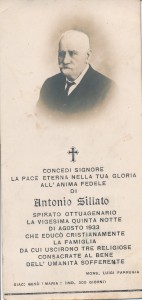 “As you can see, memorial cards can serve to tell a social and a cultural narrative. They also have a historical and an anthropological value. For example, when one compares memorial cards of different periods, one can notice the development of printing. One can also observe the use of different languages in various villages and towns, with some using the English language while others prefering Italian. As time passes, one can then follow the introduction of Maltese and the evolution of the language’s spelling as years go by.”
“As you can see, memorial cards can serve to tell a social and a cultural narrative. They also have a historical and an anthropological value. For example, when one compares memorial cards of different periods, one can notice the development of printing. One can also observe the use of different languages in various villages and towns, with some using the English language while others prefering Italian. As time passes, one can then follow the introduction of Maltese and the evolution of the language’s spelling as years go by.”“Originally, memorial cards were meant to be placed in a Missal in order to pray for the souls during mass. However, modern memorial cards tend to be bigger in size, making this practice difficult.”
Max Farrugia is one of the founders of the NGO ‘Friends of the National Archives’. The main objective of this NGO is to raise public awareness of the work of the National Archives, and the importance of preserving documents of historical value. It also offers assistance and support to the National Archives by various means, including fundraising and the promotion of a volunteers’ scheme.
“This collection of memorial cards will now form part of the project MEMORJA,” explained James Baldacchino, the administrator of the MEMORJA Project at the National Archives of Malta.
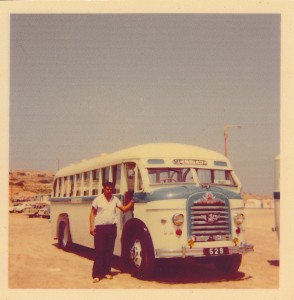 MEMORJA is an oral, sound and visual archive. Its main objective is to employ cutting edge research, methodologies, theoretical and archival approaches and techniques to collect, record, transcribe, preserve and make available and retrievable all the deposited material detailing the islands’ history.
MEMORJA is an oral, sound and visual archive. Its main objective is to employ cutting edge research, methodologies, theoretical and archival approaches and techniques to collect, record, transcribe, preserve and make available and retrievable all the deposited material detailing the islands’ history.“Initially, we started out with four themes, namely the Second World War, the British expatriates in Malta, public administration, and the Lampedusa-Malta connection. Then, we added two others – the Malta buses and transport and the bell-ringers. However, our country is blessed with so much history that you continue to expand as people approach you with different valuable memories. In this case, Max Farrugia has introduced the death theme with all its significant meanings.”
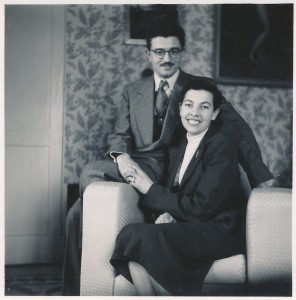 “Through this project, we found a huge amount of data which existed only in the minds of people and in their photos. Many individuals were enthusiastic to make their voice heard in order to help out with the shaping of the public’s narrative which up to now was not formally recorded for posterity. They were also very generous in donating or allowing us to copy hundreds of personal family photos from which we can identify various themes such as social life, fashion, local landscape, celebrations, food and much more.”
“Through this project, we found a huge amount of data which existed only in the minds of people and in their photos. Many individuals were enthusiastic to make their voice heard in order to help out with the shaping of the public’s narrative which up to now was not formally recorded for posterity. They were also very generous in donating or allowing us to copy hundreds of personal family photos from which we can identify various themes such as social life, fashion, local landscape, celebrations, food and much more.”Gathering records for MEMORJA is all about reciprocal patience and trust. James spends several hours over a period of time, visiting people who are interested to be interviewed until they are ready to give out the formal experience on record. He showed me several photos which were handed to him. All this information will soon be available on a website which the National Archives is currently working on.
Max Farrugia can be contacted on maxfarrugia46@gmail.com
If you are interested to contribute to the MEMORJA Project, you are invited to contact James Baldacchino on james.baldacchino@gov.mt or call 21459863.
The National Archives is located at ‘Santo Spirito’, Hospital Street, Rabat, Malta.
(Note – This article was published in SENIOR TIMES – November 2019 issued with The Times of Malta on Friday 15th November 2019)
Travelogue
Archives
| M | T | W | T | F | S | S |
|---|---|---|---|---|---|---|
| « Jan | ||||||
| 1 | 2 | 3 | 4 | 5 | 6 | 7 |
| 8 | 9 | 10 | 11 | 12 | 13 | 14 |
| 15 | 16 | 17 | 18 | 19 | 20 | 21 |
| 22 | 23 | 24 | 25 | 26 | 27 | 28 |
| 29 | 30 | |||||
Recent Posts
- A MATTER OF FATE
- MALTA’S PREHISTORIC TREASURES
- THE MAGIC IS IN THE DETAIL
- THE SELLING GAME
- NEVER FORGOTTEN
- Ġrajjiet mhux mitmuma – 35 sena mit-Traġedja tal-Patrol Boat C23
- AN UNEXPECTED VISIT
- THE SISTERS OF THE CRIB
Comments
- Pauline Harkins on Novella – Li kieku stajt!
- admin on IL-KARNIVAL TRAĠIKU TAL-1823
- Albert on IL-KARNIVAL TRAĠIKU TAL-1823
- Martin Ratcliffe on Love in the time of war
- admin on 24 SENA ILU: IT-TRAĠEDJA TAL-PATROL BOAT C23